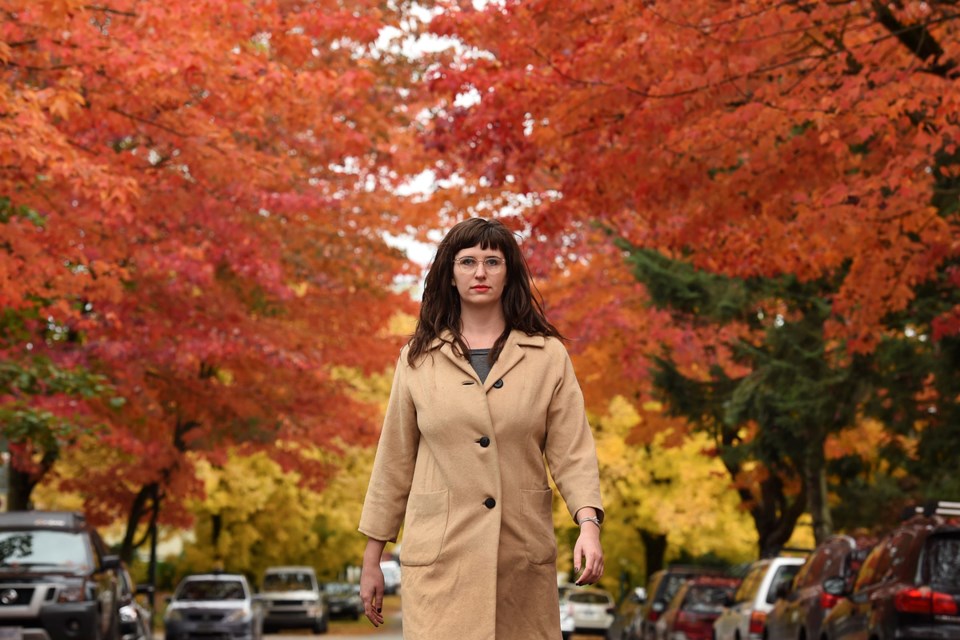Samhain is the Celtic festival that has given Halloween much of its flavour. The spookiness of Halloween owes a lot to the Celtic idea that this time of year is when the veil between this world and the other world is at its thinnest.
“It’s a day when spirits might be passing back and forth and also a day to send messages to the dead,” says Justine Little, who is part of a team organizing a local celebration of Samhain (pronounced SOW-en; rhymes with Cowan or Gowan).
Little adheres to the Reclaiming movement, a neo-pagan concept that emerged in San Francisco in the 1970s and whose most notable voice may be the author Starhawk. Reclaiming’s followers draw from earth-based pagan and magical traditions. Founded in feminist and Goddess-based ideas, Reclaiming also emphasizes dismantling structures of power and domination.
“It’s a movement that was created to marry inner spiritual work with work in the outer world and activism,” says Little. “It’s inherently very political... There’s a lot of people involved in the movement that work with environmental groups or work with antiracism. There’s a lot of people in the movement that are involved in queer activism.”
Little, who grew up on Â鶹´«Ă˝Ół»Island, became a student of Reclaiming to give her spiritual nourishment for her activism.
“I’ve been involved in feminist and activist communities over the past 10 years and something that I realized a few years ago is that I needed to explore my spirituality more, just to be able to support that work and make it feel sustainable,” she says.
In Starhawk’s writing, Samhain is described as “the witches’ new year,” a marking of the time of death and regeneration, part of the circle of life. Its core message, she writes, is that “death is no barrier to love, and every ending brings a new beginning.”
Centuries ago, the end of the harvest was believed to be when deceased ancestors would return to join the living in the feast. Gifts of food were offered for the returning dead — a ritual still practiced in forms like the Mexican Dia de los Muertos and, more obliquely, in giving candy to children, who are viewed as ancestors in new forms.
The latter incarnation — trick-or-treating — also pays homage to the practice of “guising,” in which 19th-century Scottish and Irish kids would dress in disguise and carry hollowed out turnips door-to-door to collect money or apples. This, in turn, seems to stem from an earlier ritual of donning ghost-like costumes in order to blend with the spirits who may be hanging around at this time of year.
An earlier Christian event also factors in. About 1,000 years ago, the church declared Nov. 1 to be All Saints’ Day (to honour all the saints, obviously) and Nov. 2 was declared All Souls’ Day (to honour the deceased, particularly family). The celebrations began the evening before the two memorial days — Oct. 31. Eventually, All Saints’ Eve, or All Hallows’ Eve, integrated pagan rituals and imagery, as happened frequently as Christianity spread into realms of earth-based religions, and became Halloween.
The Samhain event Little is helping organize takes place Oct. 30 at the Korean Community Centre on East Hastings at Clark. Little emphasizes that everyone is welcome and there is no need to identify with any label or religion to attend. However, getting there by 6 p.m. is important because the rituals will be explained in advance and no one will be admitted after the rituals start at 7.
“The ritual begins with creating a sacred space to do magic by people who have been chosen to participate in our ritual that way,” she says. “Part of that is invoking the elements, invoking some gods and goddesses to help with the work and then there’s some different elements that will happen during the ritual. One of them is a trance, so people will be invited to go on kind of an inner journey that will be led by someone who is speaking.”
A part of the ritual will include celebrating the lives of people who have passed away in the last year and also celebrating new lives that have come into the world, people who have been born in the past year, recognizing death and new life as part of the regeneration defined by this time of year.
“Birth, growth, death and renewal are a cycle that plays over and over again through natural systems and human lives,” writes Starhawk. “Embracing this cycle, we don’t need to fear death, but instead can see it as a stage of life and a gateway to some new form of being.”
@Pat604Johnson



